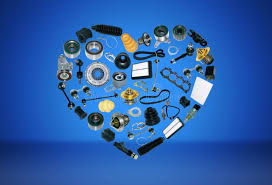Best Practice for Non-OEM Parts: Quality Without Compromise

Best Practice for Non-OEM Parts: Quality Without Compromise
When it comes to sourcing parts for heavy machinery, mining equipment, crushing plants, or screening gear, the debate between OEM (Original Equipment Manufacturer) parts and non-OEM (aftermarket) parts is ongoing. Traditionally, OEM parts have been seen as the "safe" choice, but the landscape is changing rapidly—and smart businesses are discovering that non-OEM parts, when sourced correctly, can deliver equal performance, better value, and minimal risk.
What Are Non-OEM Parts?
Non-OEM parts are manufactured by third-party companies not affiliated with the original equipment maker. However, don’t confuse "non-OEM" with “inferior.” In today’s market, many aftermarket manufacturers reverse-engineer OEM parts, improve on design weaknesses, and use high-quality materials—often leading to better reliability and longer service life.
The Misconception Around Risk
One of the biggest misconceptions about non-OEM parts is that they are a gamble. That belief may have been valid years ago when the aftermarket was flooded with low-quality imports, but the game has changed. Reputable suppliers now offer full warranties, technical support, and quality assurances that rival—if not exceed—OEM standards.
If a non-OEM supplier stands behind their product with a warranty, full-service support, and local expertise, the risk is no different than buying OEM. In fact, in some cases, it’s even lower due to faster lead times, better availability, and more responsive customer service.
Best Practices for Choosing Non-OEM Parts
To ensure you’re getting the best outcome from aftermarket parts, here are the top best practices:
1. Partner with a Trusted Supplier
Not all aftermarket suppliers are created equal. The key is to work with companies that:
-
Provide a warranty equal to or better than OEM
-
Offer technical support and installation advice
-
Have a track record of servicing your industry or specific equipment
2. Ask for Specifications and Certifications
A quality non-OEM part should match or exceed OEM specs. Look for:
-
Material certifications
-
Testing data (e.g., wear resistance, tensile strength)
-
ISO or other relevant quality certifications
3. Review the Warranty Terms
A solid warranty is a clear signal of quality and accountability. Top-tier non-OEM suppliers often offer:
-
12-month or longer warranties
-
Replacements or refunds for faulty parts
-
On-site inspections or support if something goes wrong
4. Check for Local Support and Stock
Non-OEM parts are often more accessible than OEM counterparts. Many aftermarket suppliers keep stock locally, ensuring:
-
Faster delivery
-
Less downtime
-
Better support from local reps or engineers
5. Compare Total Cost of Ownership (TCO)
OEM parts often come with a premium price—not always justified by better performance. With non-OEM parts:
-
You often pay 20–40% less
-
You may get improved longevity (especially in upgraded designs)
-
You reduce overall operating costs without sacrificing reliability
Real-World Proof
Many mining, construction, and processing companies have already made the switch to reputable non-OEM parts and are reaping the rewards—lower costs, faster lead times, and no compromise on performance.
In fact, a 2023 industry report by Aftermarket Insights noted that 70% of fleet managers now actively use non-OEM parts where warranties and support are equal or better than OEM. That figure was up from 52% in 2019, highlighting a clear shift in the market.
Final Thoughts: It’s Not About OEM vs Non-OEM. It’s About Trust.
The modern aftermarket is driven by innovation, quality control, and customer service. If your supplier offers a rock-solid warranty, expert support, and a commitment to performance, then you’re not taking a risk—you’re making a smart business move.
At the end of the day, reliability matters more than branding. And with the right non-OEM partner, you get reliability without the premium price tag.
